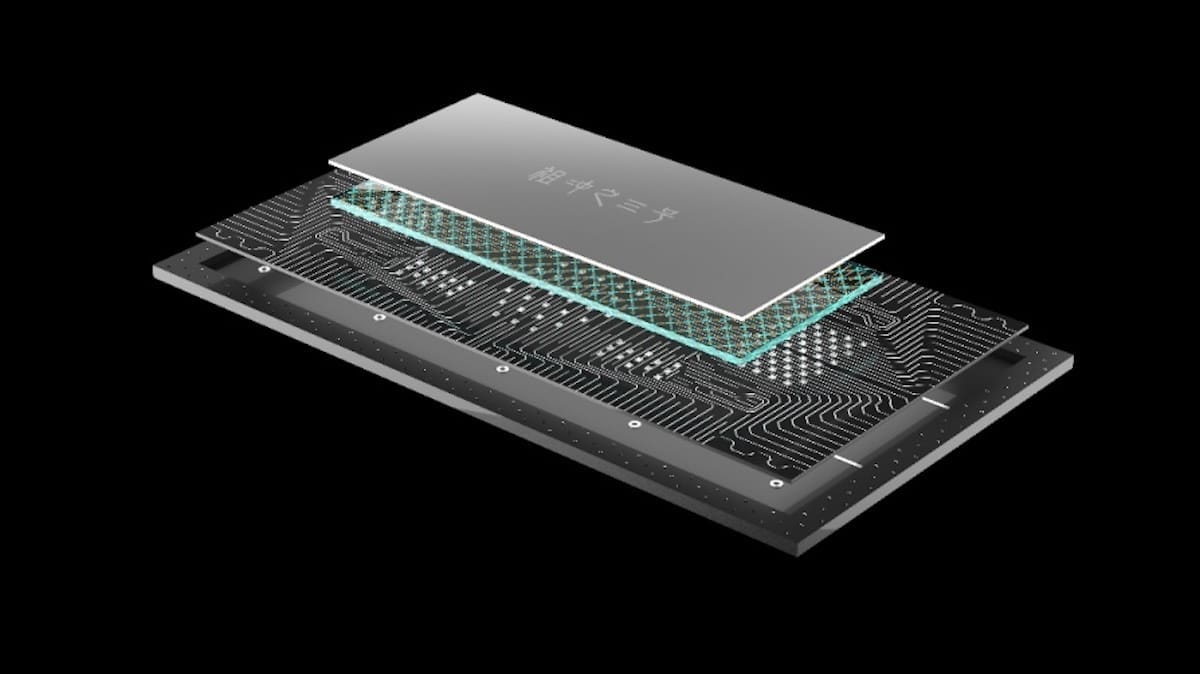Researchers from the University of Science and Technology of China (USTC) have developed the Zuchongzhi-3 superconducting quantum processor, the most advanced in the country to date. With 105 qubits and 182 couplers, this achievement represents a significant advance in quantum supremacy, challenging the limits of classical supercomputers and establishing a new benchmark in quantum computing.
An Unprecedented Advance in Quantum Computing
The USTC team, in collaboration with the Chinese Academy of Sciences, has taken a crucial step in the research of random quantum circuits with the introduction of the Zuchongzhi-3. This processor operates at a speed 10¹⁵ times faster than the world’s most powerful supercomputer and a million times faster than the latest results published by Google, consolidating China’s position in the race for quantum supremacy.
The development of the Zuchongzhi-3 follows its predecessors, Zuchongzhi-2 and Jiuzhang-3, demonstrating the Asian country’s capability to compete with tech giants like Google, IBM, and Microsoft. The findings of this research have been published in Physical Review Letters, highlighting its impact in the field of quantum computing.
China Challenges Google’s Quantum Supremacy
Since Google achieved the first demonstration of quantum supremacy in 2019 with its 53-qubit Sycamore processor, the progress in quantum computing has been rapid. At that time, the Google team completed a task in 200 seconds that would have taken 10,000 years on a classical supercomputer.
However, in 2023, researchers at USTC challenged this claim by developing more efficient classical algorithms that managed to complete the same task in 14 seconds using over 1,400 NVIDIA A100 GPUs. With the advent of supercomputers like Frontier, this task time has been reduced to 1.6 seconds, once again questioning the concept of quantum supremacy.
Nonetheless, the Chinese team achieved the first rigorous demonstration of quantum supremacy in 2020 with their photonic-based prototype Jiuzhang. In 2021, they repeated the feat with Zuchongzhi-2, and in 2023, the Jiuzhang-3 with 255 photons outperformed classical supercomputers by 10¹⁶ orders of magnitude.
Zuchongzhi-3: A New Benchmark in Quantum Processing
The Zuchongzhi-3 processor represents a qualitative leap in superconducting quantum computing. Its 105 qubits and 182 couplers give it a unique advantage for performing large-scale quantum calculations. Key features include:
- Coherence time: 72 μs
- Single-qubit gate fidelity: 99.90%
- Two-qubit gate fidelity: 99.62%
- Simultaneous readout fidelity: 99.13%
The higher stability and fidelity of the qubits enable the Zuchongzhi-3 to perform complex calculations with unprecedented accuracy. To evaluate its performance, researchers executed a task of random circuit sampling with 83 qubits and 32 layers, achieving a calculation speed 10¹⁵ times greater than the world’s most powerful supercomputer and six orders of magnitude above the most recent results from Google.
Toward Large-Scale Quantum Computing
The USTC team has not only achieved quantum supremacy with the Zuchongzhi-3, but they are also working on key areas for the future of quantum computing, including:
- Quantum error correction
- Quantum entanglement
- Quantum simulation
- Applications in quantum chemistry
Additionally, researchers have integrated a distance-7 surface code, with plans to expand it to distance 9 and 11, allowing for better error correction and more precise qubit manipulation.
The scientific community has praised these advances, describing the Zuchongzhi-3 as “a new reference in superconducting quantum computing”. The prestigious journal Physics Magazine highlighted this milestone in a special article, underscoring its impact on the evolution of quantum computing.
The Future of Quantum Computing in China
China continues to establish itself as a leader in quantum research, challenging U.S. dominance in this field. Investment in quantum computing has been a strategic priority for the Chinese government, aiming to achieve disruptive advancements in artificial intelligence, cryptography, and material simulations.
With the launch of Zuchongzhi-3, China not only reaffirms its leadership in quantum computing but also paves the way for the next generation of superconducting quantum processors. In the coming years, the competition between China and the U.S. in this area is expected to intensify, with significant implications for the future of quantum technology and its impact across multiple industries.
Source: CAS

